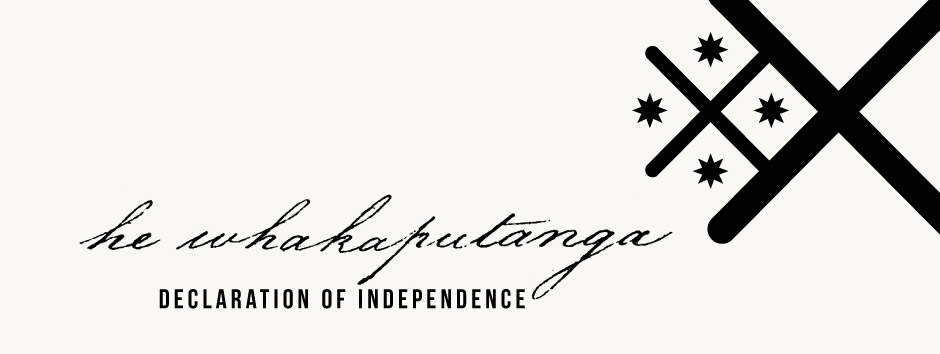Signing details
Hōne Wiremu Heke Pōkai was born around 1807 or 1808. His parents were Te Kona and Tūpanapana, and his older brothers were Tuhirangi and Peia. Heke is mainly associated with Kaikohe, where he lived first at Pāteoro, and later at his own village, Raihara. His first wife was Ono, the daughter of Te Pahi, but she died around August 1835, and their two children, Hoani (Hōne) and Marianne, died as infants. Heke later married Hāriata Rongo, Hongi Hika’s daughter and an important figure in her own right.
As a youth Heke attended the Kerikeri Church Missionary Society mission school, where he formed a close relationship with Henry Williams. He was baptised Hoani (Hōne) and Wiremu in 1835 (although he continued to use his birth name, Pōkai). He signed He Whakaputanga on 28 October 1835 as ‘Hone Wiremu Heke’.
Heke was the first rangatira to sign Te Tiriti o Waitangi on 6 February 1840, yet he is best known for his role in the 1845–46 Northern Wars, including the felling of the flagstaff at Kororāreka. Heke had gifted the flagstaff to fly Te Kara, the United Tribes’ flag, and was dismayed when it displayed the British flag instead. Angry at the dismissal of Māori sovereignty, he led and was involved in a number of battles alongside his ally Te Ruki Kawiti. He was wounded at the battle of Te Ahuahu.
After the end of the northern wars, Heke continued to seek redress, mainly with the pen. In 1849 he wrote to Queen Victoria protesting that the Crown–Māori relationship had been broken: '[W]ho was it who sent those people [Busby, Hobson, Fitzroy, and Grey] here?... it rests with you to restore the flag of my island of New Zealand, and the authority of the land of the people.' [1] He died from tuberculosis on 6 August 1850.
[1] Hōne Wiremu Heke Pōkai to Queen Victoria, 10 July 1849, British Parliamentary Papers. Colonies: New Zealand, 1850 [1280], p.17, Waikato University Library.


Community contributions